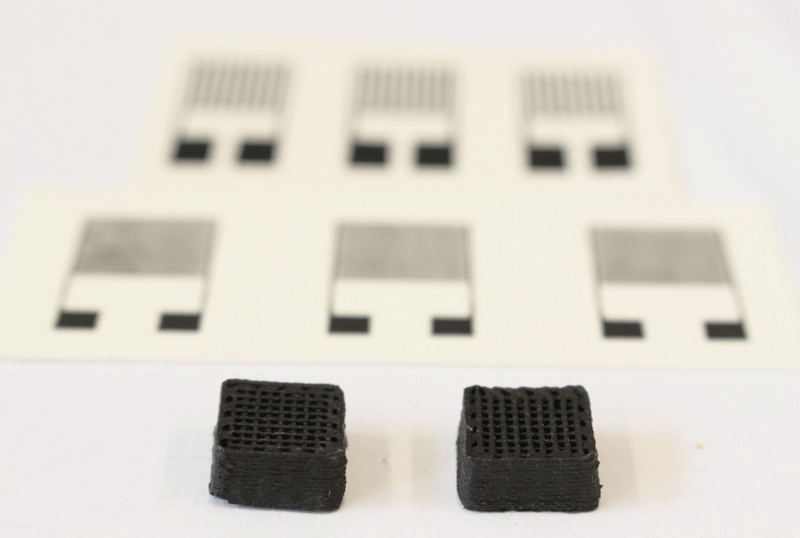Shellac ink smartens up electronics in packaging
A team of researchers at the Swiss Federal Laboratories for Materials Science and Technology (Empa) has developed a flexible, shellac-based ink for printed circuits that they claim is metal-free, non-toxic and disposable.

Shellac is a biodegradable natural resin made from the excretions of scale insects. The scientists believe this ink holds promise for intelligent packaging with sensors that monitor goods such as vegetables on long transport routes.
It potentially provides an alternative to current additive manufacturing techniques, such as direct ink writing or robocasting, which use metal particles to achieve electrical conductivity and require disposal as electronic waste at the end of the product’s life.
According to Empa’s research, the ink can be created with different formulations combining three components – carbon, graphite and shellac.
To create a highly conductive ink, a percolating network forms where tiny carbon particles are placed between elongated graphite platelets to enhance the required electrical contact. Shellac is used to bind the materials.
‘Shellac is cheap, making it an ideal material for low-cost and disposable electronics,’ suggests Gustav Nyström, Head of Empa’s Cellulose & Wood Materials laboratory. ‘It turns out it also has ideal rheological properties for its use as a binder in 3D printable electrically conductive inks.’
According to the researchers, one important advantage of this formulation is that it is soluble in alcohol – an inexpensive solvent that evaporates after the ink is applied so that it dries. This means the ink is stable to change in relative humidity, while being disposable.
To tune the formulation for different 2D and 3D printing techniques, the team changes the relative material compositions to form a stable dispersion or gel-like material that has just the right viscoelastic properties. If the ink is too viscous, it fails to print, while an overly liquid ink may lead to poor solidification of the printed structures and loss of shape retention. At rest, these inks are highly viscous or solid-like. When printing, they become more fluid enabling extrusion through the printing nozzles.
Finally, in the dried form, the ink can be transformed into mechanically stable solids, for instance in the form of free-standing conductive films.
To ensure that the ink exhibits shear thinning behaviour – i.e. the ink prints clearly without any errors – the scientists have tested two sizes of graphite platelets that are 40µm and 7-10µm in length.
‘We were interested in finding the boundary functional thresholds of our ink’s components and their respective ratio,’ explains Nyström. ‘By studying different formulations, we were able to create a sort of accessible property space diagram that can guide future work depending on which properties one would like to have in the ink.’
The researchers have also experimented with different ratios so that the material does not become too brittle, as this increases the risk of cracking as the ink dries.
To test electrical conductivity, they have explored the parameters that work best, including carbon particles to solvent ratio, carbon particle size and carbon particle morphologies.
‘The highest electrical conductivity is obtained with two carbon morphologies,’ says Nyström. ‘Big (10sμm) graphite flakes and small (10snm) carbon-black particles were combined at a specific ratio (the ratio depends on the actual size of graphite flakes), with the highest carbon particles to binder ratio, and the lowest solvent to binder ratio.’
To prove its suitability for real components, the researchers constructed, among other things, a sensor for deformations – a thin PET strip with an ink structure printed on it, whose electrical resistance changed precisely with varying degrees of bending.
Tests for tensile strength, stability under water and other properties also report promising results.
Nyström concludes, ‘We hope that this ink system can be used…for conductive tracks and sensor elements in smart packaging and biomedical devices, or in the field of food and environmental sensing.’

